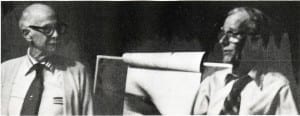Unauthorized Banksy exhibit in Amsterdam in August 2018 brings to mind state-level legibility; as well, it brings to mind limitations of language
Update: A Jan. 25, 2021 CBC article is entitled: “Street artist FONKi takes us on a journey through Phnom Penh to share Cambodia’s artistic renaissance.”
[End of update]
*
As news reports from October 2019 attest (please see below), by way of example, graffiti art can readily function within a neoliberal order.
As noted at a previous post, attempts to challenge an existing state of affairs from the outside (such as by street artists) are unlikely to succeed, given that each significant expression of a critical stance is incorporated at once into the ongoing system.
A study, entitled The Rebel Sell: Why the Culture Can’t Be Jammed (2004), by Joseph Heath and Andrew Potter, highlights such incorporations.
The corollary to the above discussion is that if change were to come, it would come from within the system.
Unauthorized Banksy exhibit, busy gift shop
The gift shop, at an unauthorized Banksy exhibit that I attended in Amsterdam’s museum district in August 2018, was busy. I bought several items.
It took me a while, through checking online, to realize it was an unauthorized exhibit.
I’m pleased that Banksy (as the following October 2019 article-links attest) has found means whereby his cut of profits from his work (recently in regard, in particular, to proceeds from the design of a Stormzy stab vest, and from a humorous painting) is ensured.
After my visit to the Amsterdam exhibit in August 2018, I did a search at the Toronto Public Library website for books about street art. It occurred to me, in reading blurbs for such books, that graffiti can be used to promote any kind of ideology. It can promote grassroots democracy, and it can also promote totalitarianism.
Any image exists within a conceptual framework. Such a frame shapes a given audience’s responses.
In the event a novel image is presented without a clearly defined framework, soon a suitable frame will be constructed around it.
Such a construction involves a creative process (as Erving Goffman has described for social interaction in general) of agreement among observers regarding what the frame will be.
Having arrived at these conclusions, I began reading about totalitarian art and totalitarianism. Among the books I have read is a study by Aldous Huxley of a historic case of ‘demonic possession.’
Click here for previous posts about Amsterdam >
Amsterdam and Banksy
A June 11, 2018 Atlantic article is entitled: “‘Cargo-Bike Moms’ Are Gentrifying the Netherlands: In Rotterdam, the bakfiets utility bike has become a symbol – and a tool – of urban displacement.”
An Aug. 19, 2019 BBC article is entitled: “What’s it like to live in an over-touristed city? Locals explain how the influx of travellers has affected them, how authorities are responding and how visitors can remain respectful of people who live there year-round.”
An Oct. 1, 2019 BBC article is entitled: “Banksy shop featuring Stormzy stab vest appears in Croydon: Elusive artist Banksy has set up a shop in south London featuring the stab vest he designed for Stormzy’s headline act at the Glastonbury Festival.”
An Oct. 2, 2019 CBC article is entitled: “Banksy canvas of chimps in U.K. Parliament up for auction amid Brexit: Sotheby’s hoping for record price of up to $3.3M Cdn.”
An Oct. 3, 2019 Guardian article is entitled: “Banksy work depicting MPs as chimpanzees sells for record price: Devolved Parliament reaches just under £9.9m at auction at Sotheby’s in London.”
An Oct. 4, 2019 Guardian article is entitled: “Dutch government ditches Holland to rebrand as the Netherlands: As part of new strategy, the Netherlands will be official name at Eurovision in May.”
Simplification, abstraction, and rationalization
Two previous posts addressing the topics at hand include:
As well, at a previous post I have explored 1950s newspaper photo retouching, a practice that ties in with many features of the history of visual art and visual representation; an excerpt from the previous post reads:
March 24, 1952 Toronto Star, page 1
March 24, 2019 Toronto Star, page 1
In future, if I get around to it, I will post all of the photos, from the newspaper pages featured at the post you are now reading.
The current post includes a front-page photo from the March 24, 1952 Toronto Star [see link above] that features a boy emptying water from a rubber boot while he stands in front of his storm-battered house in Long Branch. The photo displays a sign affixed to the house, which reads, “These premises are CONDEMNED.”
Buttonville: 36 consecutive poles town down by winds
Another photo (which I have not uploaded to the current post) features extensive retouching, so that the forms are clearly outlined. The caption reads: “ON DON MILLS Road, near Buttonville, a lineman checks wires attached to one of 36 consecutive poles which were pulled down by winds which reached velocity of 60 miles-per-hour. The storm penetrate 50 miles inland, caused two deaths, flooded town.”
Photo retouching in 1950s newspapers is up-front and obvious; the result is a retro look, which brings to mind the image manipulation that underpins Andy Warhol’s early work, and is also characteristic of the wider Pop Art movement that emerged during the 1950s.
In turn, the simplification of imagery (and accompanying reframing) that characterizes Pop Art is also evident in work by street artists such as Banksy. Such simplification also characterizes much of propaganda art promoting a wide range of ideologies.

Walking west along the Waterfront Trail during May 6, 2012 Jane’s Walk in Long Branch. Walkers are heading toward Applewood Creek in Mississauga. Trail that you see is where the southern branch of Etobicoke Creek used to flow – parallel to the trail, and south of it – on its way to Lake Ontario during Country Cottage era. Lake Promenade ran parallel to trail – close to shoreline visible on left. Mike Foley photo
[End of excerpt]
Walt Disney
A related post is entitled:
An excerpt from the above-noted post reads:
The following text is from an article by Jaan Pill, published in Cinema Canada in August 1978, which is 34 years ago as of today’s date [May 20, 2012].
Introduction
Recently retired Disney animators Frank Thomas and Ollie Johnston, the last active members of the original Nine Old Men, hand-picked by Walt Disney to head up his studio’s animation department, came to Toronto late in February [1978] for a week-long visit (February 27 – March 3 [1978]) to Nelvana, producers of A Cosmic Christmas.
The visit was jointly sponsored by Nelvana and the Ontario Arts Council. It was arranged by Nelvana as a means of encouraging professional development among its animators, who are currently completing production on Nelvana’s new TV special, The Devil and Daniel Mouse.
The program included a series of lectures at Nelvana on the use of characters (with illustrations of characterization from Snow White and other Disney films) as well as on staging, scene-planning, and putting it all together.
*
Much has been written about the impact of Walt Disney films around the world. The Disney approach has been criticized in the past for reducing whatever it touched, such as folk tales and literary classics, into the limited frame of reference that the Disney Studio could understand, through the process of “Disneyfication.” The recent lecture-demonstrations by Frank Thomas and Ollie Johnston at Nelvana Limited, however, did not deal with this aspect of Walt Disney and Mickey Mouse.
Instead, the duo presented a clear and lively outline of the procedures which animators at the Studio developed in the last 45 years in creating the Disney animated shorts and features.
The gist of the first Thomas-Johnston lecture, concerning the use of characters, was that the old-time Disney animators were aware, at all times, that what went into individual drawings would eventually turn up in the mind of the viewer. They also made a point of reaching out and grabbing the audience with strong statements which carefully controlled its attention.
In the course of the lectures Thomas and Johnston made it clear that the connection between individual drawings, scenes, and sequences on the one hand, and the viewer’s mind on the other, is less easily achieved than might be expected. Among the obstacles is old-fashioned artistic self-indulgence. Another is lack of precise intentions.
“One of the dangers is that you fall in love with yourself, or your drawing”
Of the first of these problems, Ollie Johnston commented, “One of the dangers we find is that you fall in love with yourself, or your drawing, and it’s easy to say too much, and lose your audience, by trying to make it too complicated.”
Johnston said the answer to this problem is to stop trying to tell the viewer too many things: Instead, “Let them see only what you want them to see. Like a magician. He only shows what you’re supposed to see. He doesn’t complicate it. It is not how great you are or how funny you can be. It is just what the scene is in the picture for.”
The second obstacle, lack of precise intentions, is more subtle. As Frank Thomas remarked, “Everything you draw is going to mean something to the audience; sometimes it just means that they’re confused, and they think, ‘What’s he trying to say?’ But everything you do is communicated. So you’d better put up there what you want them to see. You want to tell them just what you want them to know, and nothing else.”
With these two major obstacles out of the way, how does the animator make the connection between the drawings and the viewer’s mind? The connection is made through symbols which operate on a number of different levels. As Johnston remarked, the intended message in a Disney film is constructed in the audience’s imagination through the use of symbols which the audience will readily recognize and accept.
For example, the cartoonist uses a standard lexicon of symbols of facial expression and posture to depict a wide range (and the subtle gradations) of emotions. Another level of non-verbal communication involves “acting symbols” in which specified variations in ways of moving tell an audience something about different characters.
Thomas demonstrated the role of acting symbols with the example of how different characters would throw away a piece of paper. The paper can be dropped casually, or as if it’s very precious, or in the different ways a person who is near-sighted, arrogant, or sneaky, drops it.
A variation of acting symbols is found in the symbolism associated with a character’s movement toward or away from the camera. After a screening of The Ugly Duckling during the first lecture, Thomas noted, for example, how the main character went off over the horizon when it was sad. “I’ve always wondered,” he said, “they go off over the horizon when they’re sad. They never climb uphill, they never come towards you, they always go away, and down. They never go away uphill, either. You try it sometime, the only one that really works for you is you go away and go down. That’s a feeling of depression. It’s symbolic.”
[End of excerpt]
Simplification entails built-in limitations
Art like many things in life is to some degree ineffable. That is, art is to some extent beyond the capacity of language to adequately and meaningfully address.
James C. Scott, in Seeing Like a State (1998), argues that many things in life are beyond the capacity of state-level officials or anybody else, including reductionistic practitioners of social theory, to comprehend.
Some aspects of life are ineffable, by which I mean that language isn’t going to enable us to comprehend them.
Language takes many forms. Such forms include body language, the language of gesture, and the languages of drama, ritual, and design.
There is value in knowing what language can do, as words, gestures, and design have great power when used in particular ways. There is also value in knowing that language has limitations.
States seek to establish a level of legibility, with regard to things – such as tax collection and land tenure – that states have a strong interest in addressing. States and people in general want tangible things to deal with, and in many cases seek to establish control over the intangible things as well, through processes of social engineering.
In Seeing Like a State: How Certain Schemes to Improve the Human Condition Have Failed (1998), James C. Scott argues that the state – through the application of abstraction, simplification, and rationalization – needs to look at, and measure, certain things.
In such a process of looking at things, the state is in a position (generally until disaster of one kind or another eventually emerges, because, in the end, reality resists simplification) to ignore the rest of the reality that exists, at the local level distant from the centres of power.
The processes of simplification inherent in Banksy’s work are inherent in all branding projects.
Such simplification processes are, as well, intrinsic features of neoliberalism (or, as some observers like to say, of late capitalism). In extreme cases, neoliberalism seeks to explain the meaning of life.
A key point of all simplifications is that they explain only a few things, that meet the requirements of a particular kind of legibility. Everything else is ignored, ultimately at enormous cost.
Tulip scam
An Oct. 16, 2019 CBC article is entitled: “Massive tulip scam uncovered in Dutch flower markets, says growers’: Just 1 per cent of bulbs flowered from Amsterdam flower market, investigation finds.”
An excerpt reads:
The investigated markets are visited by millions of tourists each year, and Hoogendijk said complaints about the bulbs go back as far as 20 years.
“[Tourists] go home, most of them don’t complain, and if they complain they don’t know where to go,” Hoogendijk said. “So they send out an email or something else but they don’t go back to the market and ask for money back, [and] that’s why these market vendors have been able to keep doing this for years now.”



Leave a Reply
Want to join the discussion?Feel free to contribute!